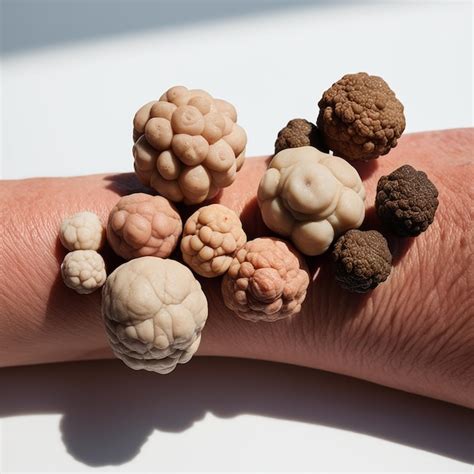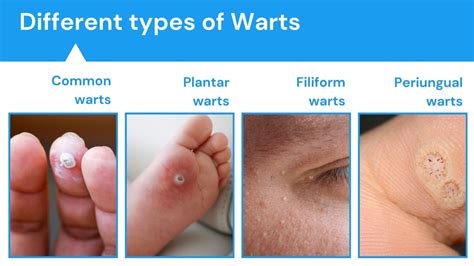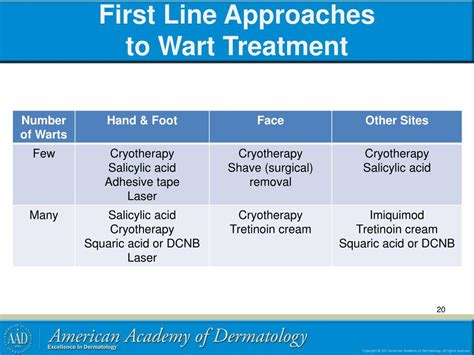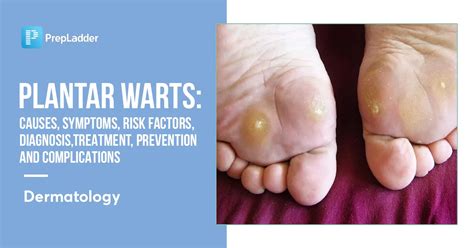Intro
Discover what is a wart, a common skin growth caused by HPV, and learn about types, symptoms, and removal treatments, including natural remedies and medical options for plantar, genital, and flat warts.
Warts are small, rough growths on the skin that are caused by the human papillomavirus (HPV). They can appear anywhere on the body, but are most commonly found on the hands, feet, and face. Warts are highly contagious and can be spread through skin-to-skin contact or by touching contaminated surfaces. They are generally harmless, but can be painful and unsightly, which can lead to emotional distress and self-consciousness.
Warts are a common problem that affects people of all ages, but are most prevalent among children and young adults. According to the American Academy of Dermatology, approximately 22% of children and 12% of adults in the United States have warts. Warts can be treated with over-the-counter remedies, prescription medications, or professional medical procedures, but it's essential to understand the causes, symptoms, and treatment options to effectively manage and prevent warts.
The impact of warts on daily life can be significant, particularly if they are painful or located in a visible area. Warts can cause embarrassment, anxiety, and social isolation, which can negatively affect a person's self-esteem and overall well-being. Furthermore, warts can also lead to secondary infections, such as bacterial or fungal infections, which can further exacerbate the condition. Therefore, it's crucial to seek medical attention if you suspect you have a wart, especially if it's causing discomfort or affecting your daily life.
Understanding Warts

Warts are caused by the HPV virus, which enters the body through small cuts or scratches in the skin. There are over 100 different strains of HPV, and some strains are more likely to cause warts than others. Warts can be classified into several types, including common warts, plantar warts, flat warts, and genital warts. Each type of wart has distinct characteristics and requires different treatment approaches.
Causes of Warts
The causes of warts are multifaceted and involve a combination of factors, including:- Human papillomavirus (HPV): The primary cause of warts is the HPV virus, which is highly contagious and can be spread through skin-to-skin contact or by touching contaminated surfaces.
- Weakened immune system: People with weakened immune systems, such as those with HIV/AIDS or undergoing chemotherapy, are more susceptible to warts.
- Skin-to-skin contact: Warts can be spread through skin-to-skin contact, such as shaking hands or touching someone who has a wart.
- Contaminated surfaces: Warts can also be spread through touching contaminated surfaces, such as door handles or towels.
Types of Warts

There are several types of warts, each with distinct characteristics and treatment approaches. The most common types of warts include:
- Common warts: These are the most common type of wart and typically appear on the hands, fingers, or face.
- Plantar warts: These warts appear on the soles of the feet and can be painful.
- Flat warts: These warts are small and flat, and typically appear on the face, hands, or feet.
- Genital warts: These warts appear on the genitals or anus and are highly contagious.
Symptoms of Warts
The symptoms of warts can vary depending on the type and location of the wart. Common symptoms include:- A small, rough growth on the skin
- Pain or discomfort, especially if the wart is located on a weight-bearing area
- Itching or bleeding
- A feeling of discomfort or embarrassment
Treatment Options for Warts

There are several treatment options for warts, including over-the-counter remedies, prescription medications, and professional medical procedures. The most effective treatment approach will depend on the type and location of the wart, as well as the individual's overall health and medical history.
- Over-the-counter remedies: Salicylic acid and cryotherapy are common over-the-counter remedies for warts.
- Prescription medications: Prescription medications, such as imiquimod or podofilox, can be used to treat warts.
- Professional medical procedures: Professional medical procedures, such as laser therapy or surgical removal, may be necessary for more severe or persistent warts.
Prevention of Warts
Preventing warts is essential to avoid the discomfort, embarrassment, and potential complications associated with warts. The following strategies can help prevent warts:- Practice good hygiene: Wash your hands regularly, especially after touching someone who has a wart.
- Avoid sharing personal items: Avoid sharing personal items, such as towels or razors, to prevent the spread of HPV.
- Wear protective clothing: Wear protective clothing, such as gloves or socks, to prevent skin-to-skin contact.
- Get vaccinated: The HPV vaccine can help prevent certain types of warts, including genital warts.
Complications of Warts

Warts can lead to several complications, including:
- Secondary infections: Warts can lead to secondary infections, such as bacterial or fungal infections.
- Scarring: Warts can cause scarring, especially if they are treated with certain medications or procedures.
- Emotional distress: Warts can cause emotional distress, including anxiety, embarrassment, and social isolation.
Living with Warts
Living with warts can be challenging, but there are several strategies that can help manage the condition. The following tips can help:- Practice good self-care: Practice good self-care, including getting enough sleep, eating a healthy diet, and engaging in regular exercise.
- Seek support: Seek support from friends, family, or a therapist to manage emotional distress.
- Follow treatment plans: Follow treatment plans carefully to ensure effective management of warts.
Conclusion and Next Steps

In conclusion, warts are a common and highly contagious condition that can cause discomfort, embarrassment, and potential complications. Understanding the causes, symptoms, and treatment options for warts is essential to effectively manage and prevent the condition. By practicing good hygiene, avoiding sharing personal items, and getting vaccinated, individuals can reduce their risk of developing warts. If you suspect you have a wart, it's essential to seek medical attention to determine the best course of treatment.
We encourage you to share your experiences and questions about warts in the comments section below. If you found this article helpful, please share it with others who may be affected by warts. Additionally, if you have any further questions or concerns, please don't hesitate to reach out to a healthcare professional for guidance and support.
What causes warts?
+Warts are caused by the human papillomavirus (HPV), which enters the body through small cuts or scratches in the skin.
How are warts treated?
+Warts can be treated with over-the-counter remedies, prescription medications, or professional medical procedures, depending on the type and location of the wart.
Can warts be prevented?
+Yes, warts can be prevented by practicing good hygiene, avoiding sharing personal items, wearing protective clothing, and getting vaccinated against HPV.
